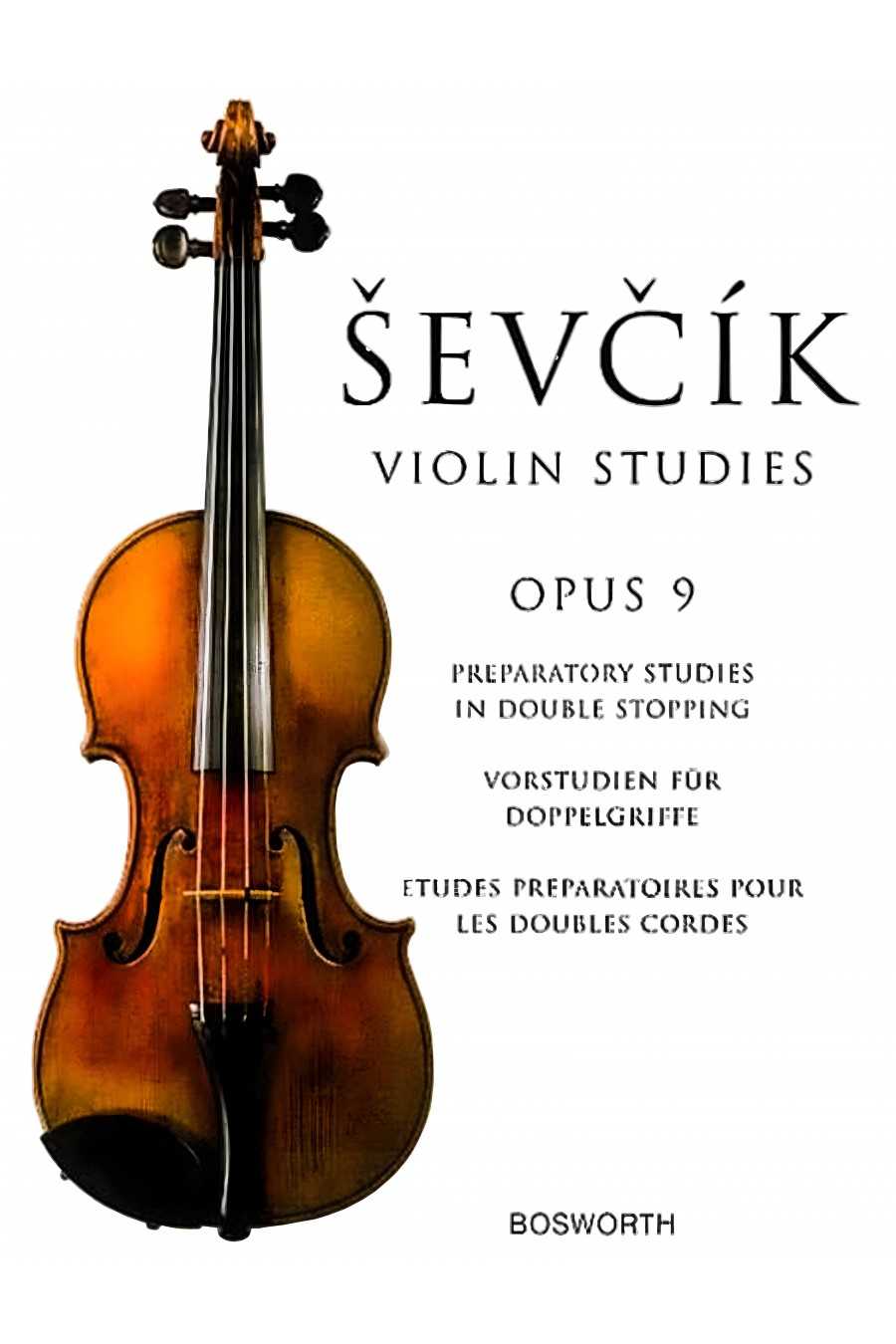
Sevcik, Op. 2 Bk. 6 for Violin
Otakar Sevcik's "School of Bowing Technique" offers technical exercises for violinists of all levels, from beginners to advanced players. Book 6 focuses on arpeggios on all four strings and includes helpful commentary.
Otakar Sevcik's Violin Studies Op. 9 is a comprehensive collection of fifty-eight exercises for mastering Double Stopping on the violin. It includes extensive guidance and performance notes in four languages and provides a versatile approach to playing chords, harmonies and pedals. This book is an excellent source of technical challenges to refine your skills and expand your musical vocabulary.
Otakar Sevcik's Violin Studies Op. 9 is an essential resource for any aspiring violinist who wants to master the art of Double Stopping. The book contains a comprehensive collection of fifty-eight exercises that cover a wide range of techniques, including chords, harmonies, and pedals. These exercises are designed to provide the most versatile approach to playing chords and expand your musical vocabulary.
The book also includes extensive guidance and performance notes in Italian, French, German and English, which will help you understand the nuances of each exercise and how to execute them flawlessly. Additionally, the book is an excellent source of technical challenges that will refine your skills and help you achieve mastery in your violin playing. If you are serious about improving your skills as a violinist, Otakar Sevcik's Violin Studies Op. 9 is a must-have resource.
Otakar Sevcik's "School of Bowing Technique" offers technical exercises for violinists of all levels, from beginners to advanced players. Book 6 focuses on arpeggios on all four strings and includes helpful commentary.
"School of Bowing Technique" op. 2 by Otakar Ševčík is a significant violin tutor with over 4,000 bowing exercises arranged by difficulty. The latest version combines the original six volumes into two and is primarily based on the first edition. The editor is Jaroslav Foltýn, a professor of violin at the Prague Conservatory.
• New edition of a tutor that generations of violinists have grown up with
• Fundamental work by a leading violin educator
• Three volumes in increasing order of difficulty: easy-moderate–difficult
• Methodological notes by the editor (Cz/Eng/Ger)
Exercises for the Right Arm
Ševčík’s complete works cover all aspects of violin technique, from elementary to advanced levels, including specific exercises for technical problems and analytical studies of standard violin concertos. His “Preparatory Trill Studies” cover finger placement, pressure on the strings, and fingerboard action. This edition is based on the original print with other sources found in Ševcík’s posthumous papers. The editor, Jaroslav Foltýn, is a violin professor at Prague Conservatory.
• Fundamental pedagogical work by a leading violin teacher
• With methodological notes by the editor (Cz/Eng/Ger)
• Moderate to advanced level of difficulty
This book series is perfect for beginner violin students. It improves left and right-hand techniques with exercises and melodies. Part 4 focuses on B-Flat, E-Flat and A-Flat major scales, chromatic scale, G and C minor scales and changing keys.
This book series is intended for beginners learning to play the violin. It aims to enhance all aspects of violin technique, including both the right- and left-hand. Each book in the series includes a variety of melodies and exercises. Part 6 of this series focuses on exercises that address 2nd, 3rd, and 4th positions, intonation, and chromatic progressions.
Ševcík wrote extensively on violin technique, covering all levels of playing. His opus 8 is one of his most important works, focusing on position changes and scales over three octaves. Our new edition is based on the original print and Ševcík's posthumous papers, edited by Jaroslav Foltýn, a professor at Prague Conservatory.
• A fundamental pedagogical work from a superb violin teacher
• With methodological notes by the editor (Cz/Eng/Ger)
• Moderate level of difficulty
Otakar Sevcik was a renowned violin teacher who developed effective and rigorous technical exercises for violin players of all skill levels - from beginners to the most advanced. His book "School of Violin Technique" covers every aspect of violin technique, including special exercises for individual technical problems and analytical studies of popular concertos. The fourth book in the series focuses on double stops and harmonics, and this Bosworth Edition includes helpful commentary on the exercises.
Ševcík’s “Violin School” is a timeless guide that covers all aspects of violin technique, including basic exercises, specific techniques, and detailed analyses of standard concertos. The new edition of Ševcík’s “School of Violin Technique” op. 1 consists of four books and includes other sources from Ševcík’s posthumous papers. Jaroslav Foltýn, a violin professor at the Prague Conservatory, provides the methodological commentary.
• There are new editions of a violin method that generations of violinists have used available.
• The seminal work of a renowned violin educator.
• Each book includes an editorial commentary with a methodology in Czech, English, and German languages by the editor.
• Bärenreiter has recently released a new series of publications featuring Ševcík’s major works.